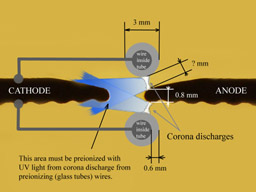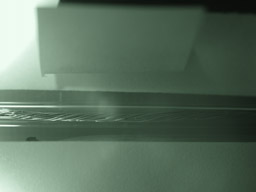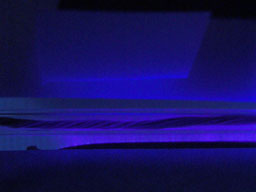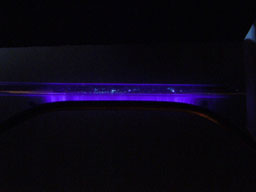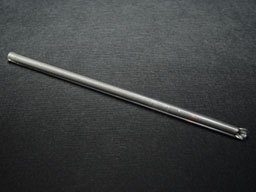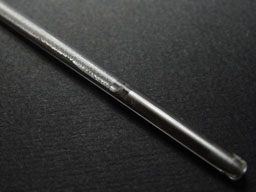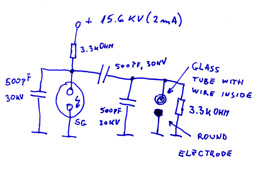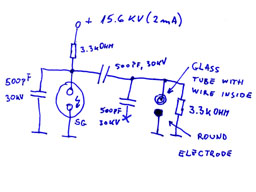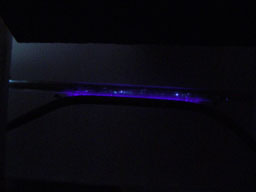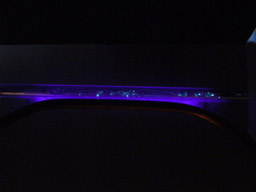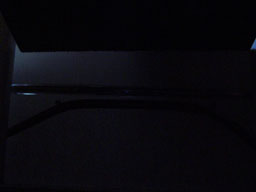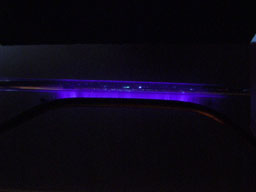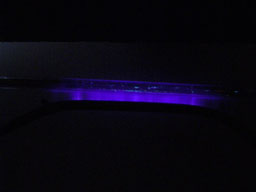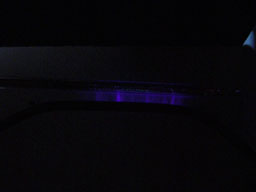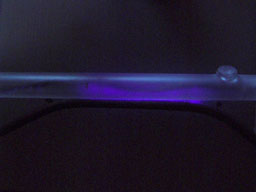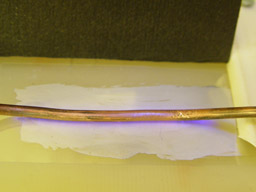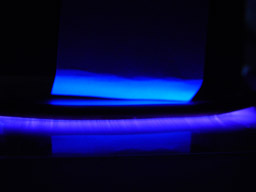Some improvement of corona
preionizing tube
by silver painting inside, and some examples...
Note: at any picture you can click and magnify to 1024 x 768 pix
I want to use maximum capability of corona preionizing electrodes
(glass tubes) for my new
TEA N2 laser. At first time I was use only glass tube with inserted
wire inside. Corona was
occur almost everywhere around, and inside this tube. I want only
corona light between
this tube and anode in TEA N2 laser design.
Firstly, how I planned make setup with electrodes and preionizing wires:
Look at this pictures why I need silver painting inside glass tubes:
Now, how I make painting inside glass tube and few mistakes:
There are few experimental distance at full and half pulsed voltage.
Full voltage mean 15.6 kV,
and half voltage is because of peaker capacitor divide this voltage to
half by "energy transfer"
from dumping capacitor to peaking capacitor. How it looks like:
Final conclusions: At half voltage of 15.6 kV results are
disappointing. But, when once TEA N2
laser will be finished, I think use about 20 - 30 kV HV power supply,
so when "energy transfer"
between dumping and peaking capacitors make divided voltage, then this
will be about 10 - 20 kV,
which is enough for preionizing distance of about 1 - 1.5 mm which I
think use.
"Bonus" pictures:
